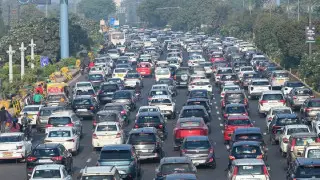
Freepik
New Delhi: After enduring scorching heatwaves across various regions for the past three months, India is finally seeing the onset of pre-monsoon showers, bringing much-needed relief to its residents. However, along with the rain comes a fresh set of challenges, particularly for those who commute regularly, especially in areas prone to waterlogging.
In major urban centers where waterlogging on roads is a frequent occurrence, it poses a significant menace to commuters and drivers alike. Traffic congestion and stalled vehicles during monsoons are common sights, often leading to delays and frustration. For many drivers, the fear of their vehicles getting stuck or damaged due to waterlogged roads is a genuine concern.
Here are some essential tips to navigate flooded or waterlogged roads safely without causing damage to your vehicle:
Prevention is key when it comes to navigating through waterlogged roads. It is advisable to avoid routes where the water level exceeds the lowest part of your vehicle's body, such as the bottom of the front bumper or door sills. Small cars are particularly vulnerable to deeper water, which can lead to exhaust clogging, water seepage into the radiator and engine, posing potential catastrophic damage to the vehicle. Areas like underpasses are notorious for waterlogging and should be avoided after heavy rainfall to prevent such risks.
When driving through pooled water, maintain a slow and steady pace. Keep the vehicle in motion to prevent stalling, as halting in the middle of a pool can allow water to seep into internal components. Avoid sudden acceleration or braking, opting instead to drive in lower gears to maintain control and stability.
A crucial safety tip is to refrain from applying brakes while still in a waterlogged area. Only use brakes once the vehicle has safely exited the flooded zone. This practice helps clear moisture from brake shoes, ensuring they function effectively when needed, reducing the risk of brake failure due to water buildup.
If your vehicle stalls in the middle of a waterlogged area, avoid attempting to restart the engine immediately. Restarting can exert excessive pressure on connecting rods, potentially causing them to break. Moreover, water ingress through the air intake or emissions systems can lead to severe engine damage, resulting in costly repairs. Instead, try to push the car out of the waterlogged area or seek assistance to minimise further damage.
By following these precautions and tips, drivers can navigate safely through waterlogged roads during the monsoon season, reducing the risk of vehicle damage and ensuring a smoother commute amidst challenging weather conditions.













Copyright © 2025 Top Indian News
